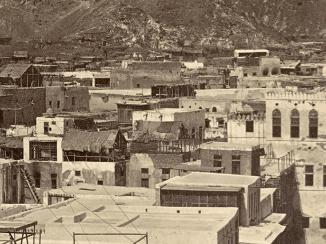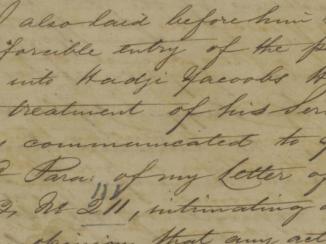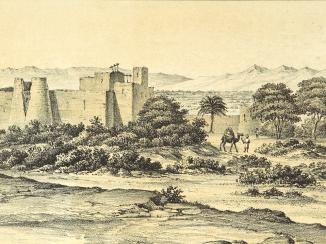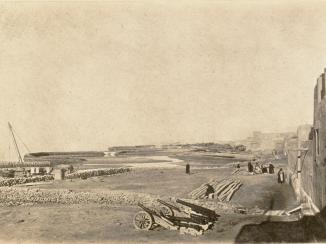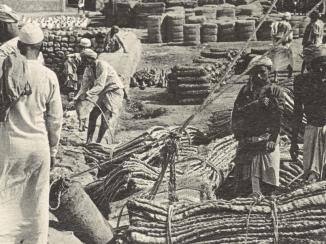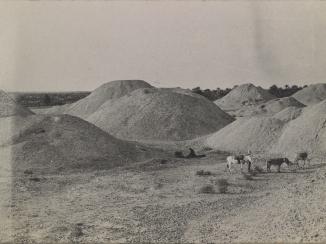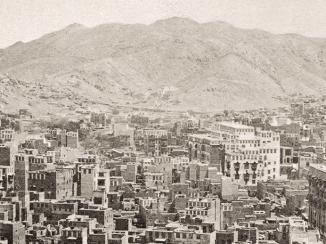Overview
Originally known as sahil oman (coast of Oman) the area on the southern shores of the Gulf, which today comprises the United Arab Emirates, has been referred to by Europeans – particularly the British – by a number of names over time.
The principle cities and ruling families are Abu Dhabi (Al Nahyan), Dubai (Al Maktoum), Ajman (al Nuaimi), Umm al-Qawain (al Mualla), Sharjah (Al Qawasim One of the ruling families of the United Arab Emirates; also used to refer to a confederation of seafaring Arabs led by the Qāsimī tribe from Ras al Khaima. ), Ras al Khaimah (Al Qawasim One of the ruling families of the United Arab Emirates; also used to refer to a confederation of seafaring Arabs led by the Qāsimī tribe from Ras al Khaima. ) and Fujairah (Al Sharqi). Today the UAE has a population of approximately seven million. The capital and presidency The name given to each of the three divisions of the territory of the East India Company, and later the British Raj, on the Indian subcontinent. of the UAE is Abu Dhabi reflecting its much greater wealth derived from its oil and gas revenues.
In the late eighteenth century, the East India Company named the area ‘the Pirate Coast’ as its ships on the Basra–Bombay route frequently came under attack from the Al Qawasim One of the ruling families of the United Arab Emirates; also used to refer to a confederation of seafaring Arabs led by the Qāsimī tribe from Ras al Khaima. tribe, who were based at Sharjah and Ras al Khaimah. This view of history is contested, however as some historians have written about an Arab system of ‘maritime toll-levying and raiding’, which the British termed ‘extortion and piracy’.
Following military expeditions in 1809 and 1819, Britain began offering treaties with local tribes whereby, in exchange for the cessation of maritime war, Britain would recognise the ruling families and offer protection in return for a maritime truce. Nevertheless, each shaikhdom maintained control of its internal affairs. These treaties were renewed annually initially, then every ten years, until the 1853 Treaty of Perpetual Maritime Peace superseded them. After this date, the region became known to the British as ‘the Trucial Coast’.
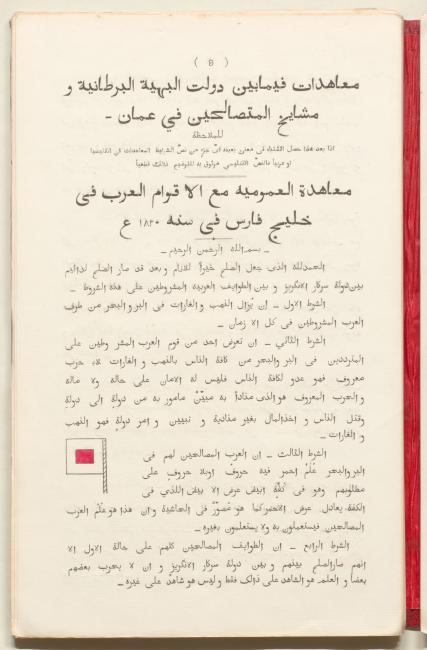
The Trucial States A name used by Britain from the nineteenth century to 1971 to refer to the present-day United Arab Emirates. signed an ‘exclusivity treaty’ with Britain in 1892 whereby the rulers were forbidden from entering into agreement with powers other than Britain, a move which consolidated British influence over the states.
The development of the air route in the 1930s was an important new source of revenue for the rulers. Until the discovery of oil in 1950s, which heralded the transformation of the area, the economy was based on animal herding, basic re-export trade, fishing and pearling. Oil exports from Abu Dhabi commenced in 1962.
In 1968, Britain announced its intention to withdraw from the Gulf due to economic pressures. The Gulf rulers were concerned and even offered to pay Britain the costs of maintaining its presence in the Gulf. However, the British withdrawal was not to be halted and the United Arab Emirates came into existence on 23 December 1971 with Shaikh Zayed, ruler of Abu Dhabi, as its first president.
Key moments from the United Arab Emirates’s history in the India Office Records include
- 1820: Treaty against piracy. (IOR/R/15/1/21, ff. 21–26)
- 1853: Treaty of Perpetual Maritime Peace. (IOR/R/15/1/735)
- 1892: Exclusivity agreement. (IOR/R/15/1/735)
- 1926: Sketch map showing Oman and the Trucial States A name used by Britain from the nineteenth century to 1971 to refer to the present-day United Arab Emirates. . (IOR/R/15/1/625, f. 18C)
- 1926 to 1931: Establishment of air route. (IOR/R/15/2/119)
Elsewhere on the web
Suggested reading
Muhammad Morsy Abdullah, The United Arab Emirates: A Modern History (London: Croom Helm, 1978)
Christopher Davidson, The United Arab Emirates: A Study in Survival (Boulder: Lynne Rienner, 2005)
Frauke Heard Bey, From
Trucial States
A name used by Britain from the nineteenth century to 1971 to refer to the present-day United Arab Emirates.
to United Arab Emirates (London: Longman, 1982)
Rosemarie Said Zahlan, ‘The United Arab Emirates’, in The Making of the Modern Gulf States by Rosemarie Said Zahlan (Reading: Ithaca Press, 1998)
Rosemarie Said Zahlan, The Origins of the United Arab Emirates: A Political and Social History of the
Trucial States
A name used by Britain from the nineteenth century to 1971 to refer to the present-day United Arab Emirates.
(New York: MacMillan, 1978)
James Onley, ‘The Politics of Protection in the Gulf: The Arab Rulers and the British Resident in the Nineteenth Century’ New Arabian Studies, 6 (2004), pp. 30–92
Sultan Muhammad al-Qasimi, The Myth of Arab Piracy in the Gulf (London: Routledge, 1988)
